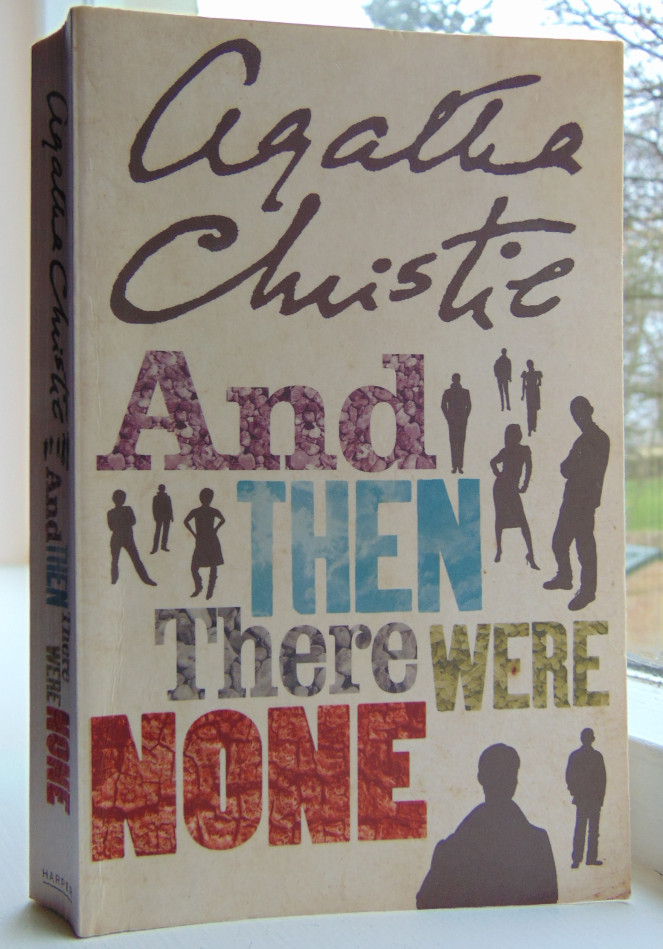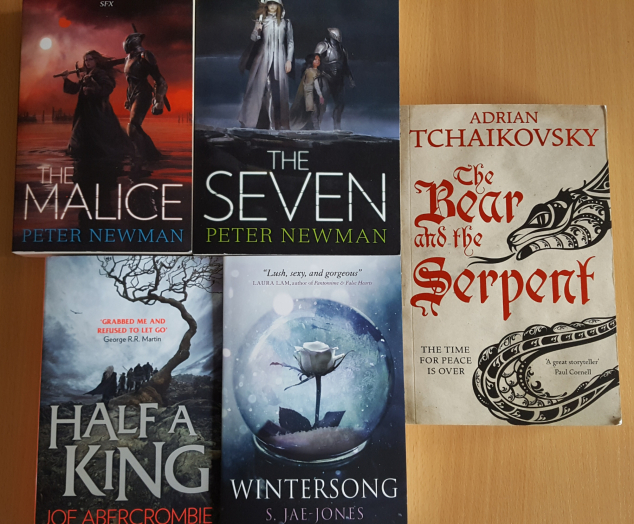Even by Agatha Christie’s extremely high standards, this novel contains a truly ingenious plot. By her own admission, the book took an enormous amount of planning, and it’s only in an epilogue that the brilliant solution to the problem is revealed.
 “And then there were none” by Agatha Christie (1939)
“And then there were none” by Agatha Christie (1939)
The mystery begins when ten people from a variety of backgrounds are invited to Soldier Island. The island, which lies off the Devon coast, has recently been sold to an unknown buyer and there has been much discussion in the newspapers about who may have bought it.
Each of the ten invited to the island have been lured there on different pretexts, including a young woman who believes she has been engaged as a secretary, a doctor who has been sent no details about his invitation but has received a large fee for attending, and an elderly General who expects to be meeting up with old army chums.
A local boatman takes the guests to the island, where they find a married couple acting as butler and housekeeper. The butler and his wife are two of the ten who have come to the island at the request of the owner, a Mr Owen.
When word arrives that Mr Owen has been held up and will not be joining the party immediately, the guests begin to discuss who this mysterious man might be. None of them have met him or have any idea who he is. Even the butler and housekeeper are in the dark, having taken up their positions on the island just days before the guests arrived.
In each of the bedrooms there is a printed nursery rhyme about ten little soldier boys. The rhyme begins ‘Ten little soldier boys went out to dine; One choked his little self and then there were Nine.’ As the verses go on, a soldier boy dies in each one, until the poem concludes with the words ‘And then there were none.’ In the dining room the guests notice ten small china soldier figures, which appear to represent the soldiers in the poem.
As the guests sit enjoying coffee after dinner on their first evening on the island, a disembodied voice suddenly fills the dining room. The voice details the names of each of the ten people staying in the house along with an accusation of murder committed on a certain date. The guests listen in astonishment as each of them is accused of a dreadful crime.
Not long after that, one of the guests chokes to death, and that night the housekeeper dies in her sleep. The butler is disturbed when he notices two of the little china figures have disappeared from the dining room. When the General is murdered by an unknown hand the following day and another china soldier disappears, it’s obvious that something decidedly sinister is going on. A search of the island reveals no possible hiding place for an eleventh person, and no sign of there being anyone else present.
The story carries on with rising tension as each of the original ten people meet their end by one means or another. When they are all dead the mystery remains: who killed them?
I quite often read Agatha Christie at bedtime, but I would recommend keeping this particular novel for daytime pleasure. From a reasonably innocuous beginning, a sense of menace increases as the book goes on. The tension builds once the killings start, and from then on there’s no let up until the culmination of the book.
There’s an author’s note at the beginning of the edition I have, taken from Agatha Christie’s autobiography, in which she explains that she wrote the story because it was so difficult to do that the idea fascinated her. ‘The murder of Roger Ackroyd’ is often hailed her most brilliant novel, and it is indeed a superb creation, but this one is a real class act and has one of the cleverest plots of any novel I’ve read.
Advertisements Share this:- More





